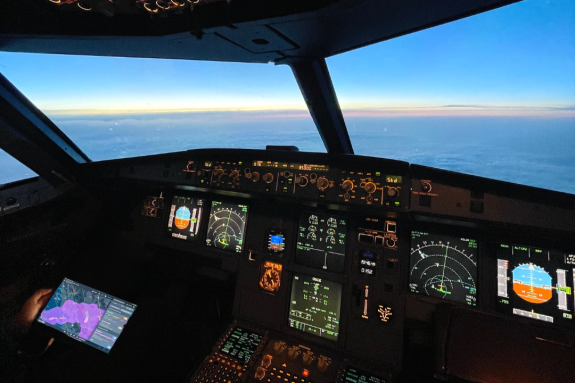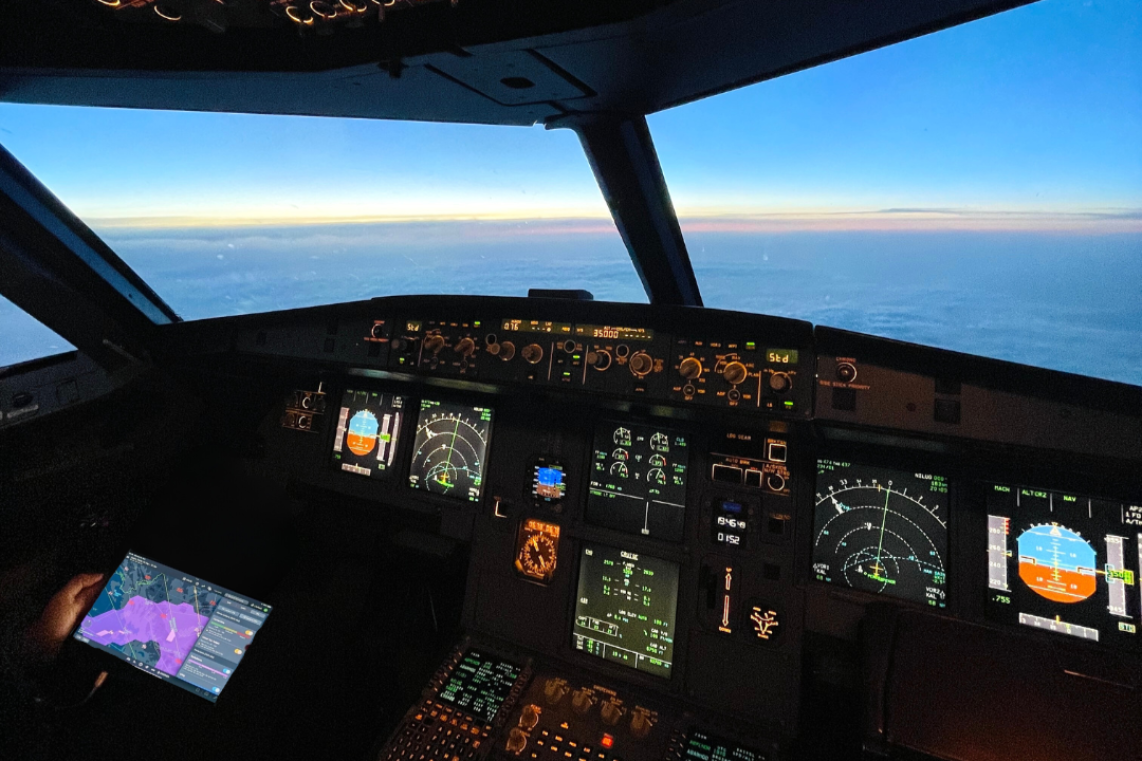

Celebrating 10 years of a paperless cockpit – saving over 30 million pages of paper
12.06.2025SmartLynx Airlines is proud to celebrate a major milestone in our commitment to smarter, more sustainable aviation: 10 years since the launch of our fully paperless cockpit. This initiative has saved more than 30 million pages of printed materials – streamlining operations, improving efficiency, and reducing our environmental impact.
Where it all began
Back in 2014, the initial idea of a digital transformation was born when VP Flight Operations recognized a growing need to align with evolving industry standards and improve the operational environment in the cockpit.
At the time, the Jeppesen chart system consisted of 12 printed volumes covering global navigation, updated weekly through courier services like DHL or UPS. The update process was manual, time-consuming, and costly, with high logistical demands, especially in remote operational areas. These paper envelopes, labeled as "flight safety critical documents," added to administrative burdens and risked delays that could compromise efficiency.
The objective was clear: reduce manual processes, eliminate paper-based inefficiencies, and transition toward a modern, fully digital cockpit. The vision was to not only streamline flight documentation but to do so in a way that enhanced safety, compliance, and crew effectiveness.
Solution & implementation
After thorough consideration, SmartLynx selected the iPad as its Electronic Flight Bag (EFB) platform due to its compatibility with major aviation service providers like Jeppesen, Lufthansa, NavBlue, and Web Manuals. The iPad stood out for its low technical barrier and high usability in global operations.
Today, the EFB integrates essential modules such as:
- Aircraft performance calculations
- Crew briefing packages
- Operational documentation
- Internal communication
- Safety reporting
From evaluation to go-live, the rollout process took approximately six months. This included pilot training, system testing, documentation updates, and validation of all technical parameters. The transition began with a pilot-attached device model – each pilot receiving a personal iPad – to ensure responsibility and continuity of use.

System integration
The digital cockpit solution was integrated with existing systems, including flight planning, crew scheduling, and safety reporting. To ensure seamless data flow, the EFB content is managed by the service provider and securely delivered to each iPad. Post-flight data is then processed in collaboration between the internal IT team and the provider. The Flight Operations Support team plays a vital role in regular data verification and system optimization.
Crew involvement & training
Pilot buy-in was critical. A structured training program was implemented, combining Computer-Based Training (CBT), slide presentations, and EFB proficiency tests. Feedback was continuously gathered via an EFB feedback form to assess usability and adoption challenges. This helped identify pain points early and improve training outcomes.

Impact & Benefits
The switch to a paperless cockpit delivered significant and measurable benefits:
- Reduced operational costs: No more courier services or printing of large volumes.
- Environmental gains: A considerable reduction in paper use contributed to sustainability goals.
- Faster data processing: Post-flight information is now transmitted immediately upon landing.
- Improved crew efficiency: Pilots have faster, more reliable access to all operational documents.
- Increased safety and compliance: Digital tools allow for real-time updates and error reduction.
The result? A greener, leaner, and more responsive flight operation.

Compliance & Safety
The EFB implementation followed strict adherence to EASA AIR-OPS Subpart M, which defines the regulatory framework for electronic systems used in flight operations. The project was regularly reviewed by the Competent Authority, and recommendations were implemented as part of the approval process.
As a contingency, a revert-to-paper backup plan is in place. Each aircraft carries at least one operational iPad, and spare devices are stocked at key operational bases.
Sustainability angle
The paperless cockpit impact is clear – thousands of pages of flight documentation are no longer printed or transported each year. That means more than 30 million pages have been saved, which equals more than 3000 trees.
The ripple effect extends to reduced fuel burn from lighter aircraft, fewer emissions from logistics, and a smaller operational footprint overall. Whether or not these benefits have been included in formal ESG reporting, they contribute meaningfully to our broader sustainability goals.
Looking ahead
The digital cockpit journey doesn’t end here. Our future plans include deeper integration with other operational systems and potential exploration of predictive technologies, and AI-based decision support.
The aim remains unchanged: to reduce pilot workload, enhance operational safety, and maintain full regulatory compliance – all while improving overall efficiency and sustainability.
ACMI ilgtermiņa Partneri






